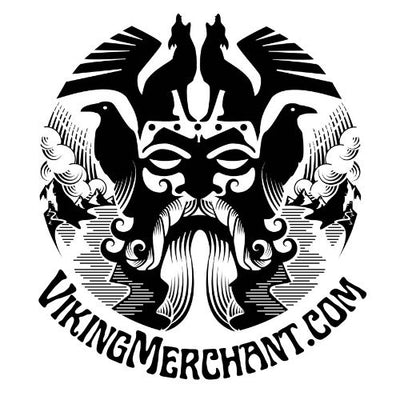Viking Holiday Traditions: A Journey Through Norse Festivities
Posted by Amber Lee on
When it comes to the Vikings, images of fierce warriors, longships, and elaborate sagas often come to mind. But beneath the helm of these seafarers was a rich tapestry of customs and traditions, especially when it came to their holidays. Let's set sail on a voyage to the heart of Viking holiday rituals and discover how these Norse folks celebrated.

1. Yuletide (Jól): The Heart of Winter
- Origins: Long before the Christian influence reached Nordic shores, Vikings celebrated Yule, a mid-winter festival lasting around twelve days. This festival was an amalgamation of feasting, toasting to the gods, and awaiting the rebirth of the sun.
- The Yule Log: Central to Yule was the burning of a massive log, which was believed to ward off evil spirits and bless the household for the year to come.
- The Wild Hunt: Legend held that Odin led a ghostly procession across the night sky during Yule, bringing omens for the new year.
- Feasting: A significant part of Yule was the sacrificial feast where animals, particularly pigs, were offered to the gods to ensure fertility and good fortune in the coming year.
2. Winter Nights (Vetrnætr): Welcoming Winter
- Celebration: Winter Nights, occurring in late October, marked the beginning of winter and was a time to honor the spirits of the deceased and the elves.
- Rituals: Families gathered to honor their ancestors, often setting aside a portion of their meals as an offering to them.
3. Sigurblót: The Victory Celebration
- Spring Welcome: Occurring around April, Sigurblót was the Vikings' way of celebrating the arrival of spring.
- Purpose: Vikings offered sacrifices to the gods, praying for victory in the upcoming raiding season and bounties for their communities.
- Community Feasts: Large gatherings and feasts were organized, with communities coming together in festive unity.
4. Midsummer: Celebrating the Sun
- Longest Day: Much like modern midsummer celebrations, Vikings marked the longest day of the year with much reverence, seeing it as a powerful time of magic and influence.
- Fertility Rituals: This period was often associated with fertility, and various rituals were performed to ensure a good harvest.
- Merrymaking: Dancing around bonfires, singing songs, and telling tales were common ways to celebrate the midsummer night.
5. Disablót: Honoring the Valkyries and Goddesses
- Female Power: Disablót was a solemn occasion dedicated to the female deities, particularly the Valkyries and goddesses like Frigg and Freyja.
- Rituals: Sacrifices, often in the form of animals or food offerings, were made to honor these deities and seek their blessings.
As Christianity spread through the Viking territories, many Norse traditions began to intertwine with Christian customs. Yule, for instance, merged with Christmas celebrations, but many of its core elements, like the Yule log and feasting, have persisted and are still celebrated in various forms today.
The holidays of the Vikings were deeply intertwined with nature, the cosmos, and their pantheon of gods. From awaiting the sun's rebirth during the harsh winter to dancing under the midsummer night sky, these celebrations showcase the Vikings' profound connection to the world around them. Today, as we unearth and reflect upon these traditions, there's an opportunity to understand the richness of Norse culture beyond its often mythologized stories.
